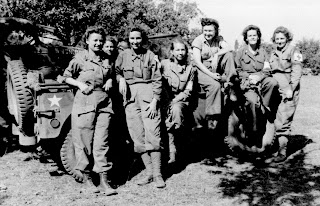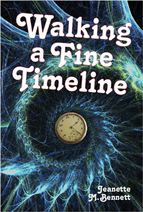The year was 2610. I finally got my Time Travel License. I can honestly say it was harder to get than my doctoral degrees in history and anthropology. The Institute of Time Travel insists on both. I don’t know why one needs either. I think it’s just a weeding process so they will have fewer travelers to deal with.
I had already applied to the Association of Temporal Anthropologists. My membership would be official as soon as I made my first trip into the past. I asked University of Cambridge if they would like to sponsor me. To join the Association a Temporal Anthropologist, one must be attached to a university. Being a sentimental lot, we try to get picked up by our old alma maters. Having a T.A. on staff is as prestigious as having a Nobel Prize winner, so any university that can will snatch us up. Cambridge was very eager to have me, for not only was I an alumni, I was also a native of the town. I was the classic local boy makes good.
So, I was all ready for my first trip into the Victorian Age. Whenever possible the Institute likes our first trip to be with an experienced older Temporal Anthropologist to show us the ropes. It’s what we call a Mentor.
Not that I hadn’t been trained, heaven knows. I had spent countless hours being groomed by Victorian re-enactors. I had practically lived in holographic mock-ups from real footage from the past. And there were the “ingraining” sessions at the Institute that I don’t remember much about, which I’m sure is the way they want it. My own family no longer recognized me.
The only Temporal Anthropologist covering the 19th century at the time was Dr. Henry Darrel from the University of Wyoming. Problem was his persona was a working class cowboy, mine was a gentleman scholar. And he had only been a T.A. for five years. Not ideal, but he was better than going it alone.
 |
| Sir Albert Leach in his younger days (Always envied that magnificent mustache!) |
I felt like I was fourteen again, the first time I had seen Sir Albert. My Grams Julia, the Victorian literature professor, had taken me to a lecture on campus. Sir Albert Leach presented footage of 1870 Cambridge that he brought back for the University. I was completely enthralled and vowed I would one day be a Temporal Anthropologist just like Sir Albert.
And here I now stood talking to my childhood hero and inspiration like we were old friends. Well, he talked like I was his old friend. I just stammered. Sir Albert asked if I would like him to be my Mentor and take me out on my first outing. He was willing to come out of retirement for me.
I managed to mumble a “yes.” I’m sure the fellow felt he was dealing with an idiot. As I hung up I remembered Dr. Darrel had already promised to mentor me. I called him up and apologized profusely for my rudeness. He just laughed, “Wendell, who do you think called Leach and put the idea in his head?” That is one I still owe the man.
The day came. Sir Albert looked so noble in his black silk top hat and frock coat made by Victorian tailors. He also looked a little frail. He was ancient by that time. A few more years and he would not have been able to make the trip. I fought the urge to kneel and kiss his ring.
Sir Albert gave me an appraising eye, and then smiled. “All right, Dr. Howe--mind if I call you Wendell?--if anyone asks, you are my sister’s son, Wendell Howe, from Cambridge, and this is your first trip to the big city. You will call me 'Uncle Albert' in the field. Understood?”
I nodded nervously.
He clapped me on the shoulder. “Don’t worry, old boy. You will do just fine, even if you aren’t an Oxford man. Besides we will give the natives that story to explain any awkwardness on your part. London is full of gawking tourists.”
 |
| London in 1888 |
Fortunately most people didn’t notice me, but one woman frowned back at me as I stared at her.
Sir Albert tipped his hat to her. “Please, excuse my nephew. He’s a little touched in the head.”
She gave him a sympathetic look, and moved on.
“Now my boy,” he said patiently. “It is very rude to stare at strangers in this period, especially at women. They take it as arrogance or even a threat. Next time you find yourself doing that, cast your eyes down and beg their pardon.”
“I already know that. I forgot.” I gave a defeated sigh. “How am I going to remember everything? It’s so overwhelming.”
“You will catch on quickly. A polite tip of the hat or a humble apology can get you out of a lot of social faux pas. ”
“I don’t think I can pass myself off as a gentleman like you, Sir--I mean, Uncle Albert.”
He studied me a moment. “Maybe in time. However, you are going with an upper middle class persona with a large enough inheritance to pursue a life of scholarly interests. Plenty of those now running about with butterfly nets or haunting libraries. I believe some day the term will be ‘geek.’ Yes, I think you can pull that off quite nicely.”
Nowadays I can pull off a “refined gentleman” when I need to, but it is hard work. Quirky bachelor is my forte, perhaps because that’s what I really am. I’ve never been able to match the smooth elegance and sophistication that Sir Albert had. He still is and will always be the greatest temporal anthropologist of all time.
We didn’t have any special project for that trip. This was to be an uneventful dry run. I had only the reproduction clothes I stood in, so we went shopping for a wardrobe and other essentials for me. No question as to whether or not they looked authentic since they were the real thing. I stared at the sleeve of my new suit realizing this had been hand sewn by Victorian tailors, from cloth woven in Victorian mills, from wool grown on Victorian sheep, that had eaten Victorian buttercups! It was all so amazing to me. Even after all these years it still fills me with wonder.
 |
| Traffic Jam on London Bridge in 1888 |
Sir Albert was always patient and kind to me. He also had quite a sense of humour. I began to feel like he really was my uncle. I always knew I could call him any time and ask his advice. I mourned him greatly when he passed away. After all these years I still miss the dear old chap. And I know I can never fill his shoes. Best I can aspire to is to one day fill the pinky of his glove.






















